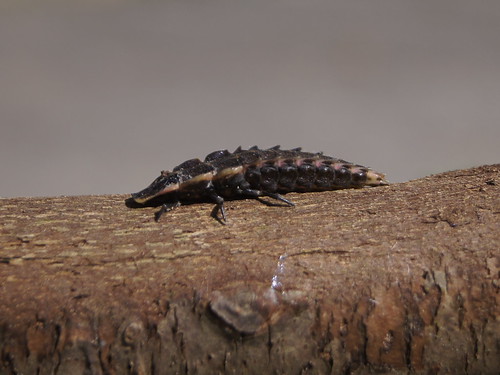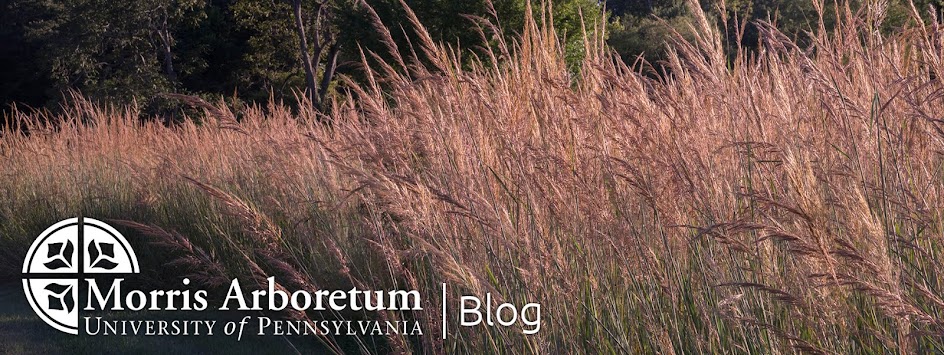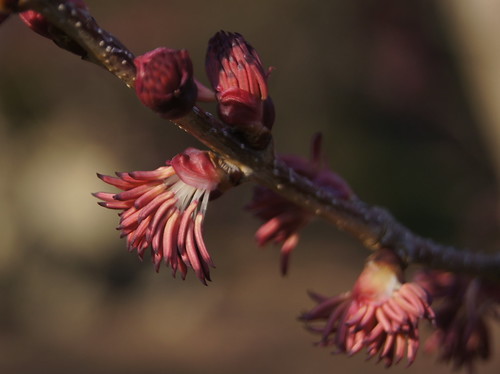Bob Gutowski, Director of Public Programs
Predaceous, bioluminescent lavrvae lurk beneath the yellow-flowered dogwood, magnificent magnolias and narcissus multitudes on the first day of Spring. Lamprydiae thrive at the Morris Arboretum. You have seen them as adults, nocturnal summer fliers - the fireflies.

I found this creature under a large hemlock (Tsuga canadense) in the collection. It measured nearly one inch, had six legs and eleven segments. I sent pictures to my "go to" source for insect ID
http://www.bugguide.net/. A quick reponse told me it is an unidentified firefly (Lampridae) larvae.
About three dozen firefly species occur in Pennsylvania, with at least a few here at the Morris Arboretum. Perhaps this is the larvae of the state insect of Pennsylvania,
Photuris pennsylvanica.

I found lots of good Firefly information on Wikipedia:
... Fireflies hibernate over winter during the larval stage, some species for several years. Some do this by burrowing underground, while others find places on or under the bark of trees. They emerge in the spring. After several weeks of feeding, they pupate for 1 to 2.5 weeks and emerge as adults. The larvae of most species are specialized predators and feed on other larvae, terrestrial snails, and slugs. One such species is Alecton discoidalis which is found in Cuba. Some are so specialized that they have grooved mandibles that deliver digestive fluids directly to their prey. Adult diet varies. Some are predatory, while others feed on plant pollen or nectar.
... Female
Photuris fireflies are known for mimicking the mating flashes of other "lightning bugs" for the sole purpose of predation. Target males are attracted to what appears to be a suitable mate, and are then eaten. For this reason the
Photuris species are sometimes referred to as "femme fatale fireflies."















